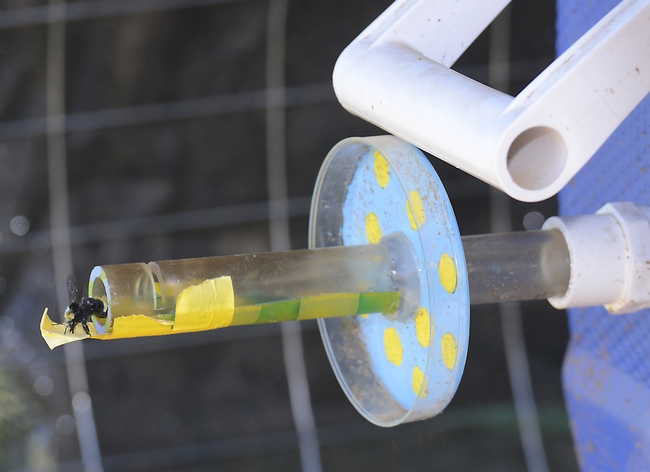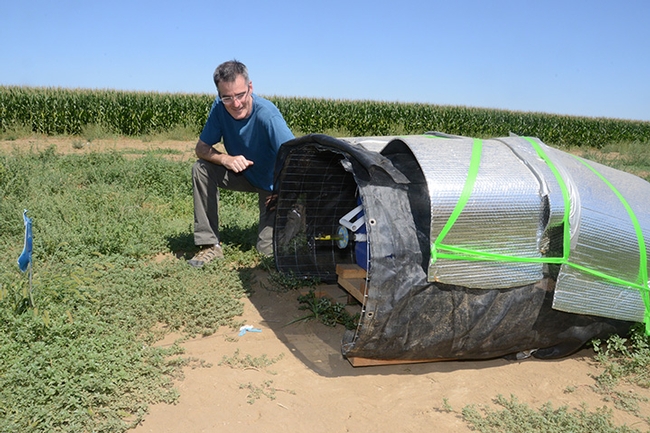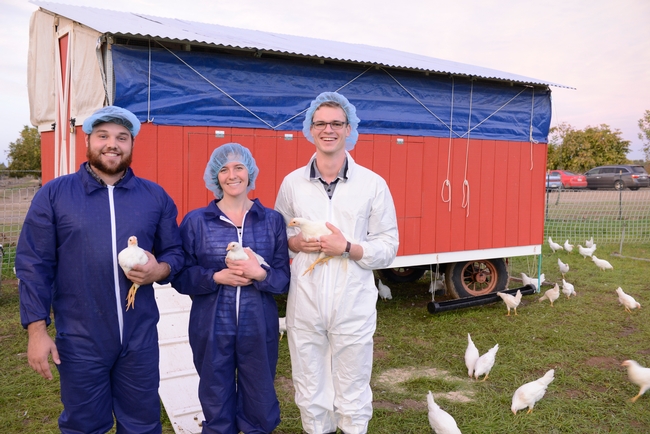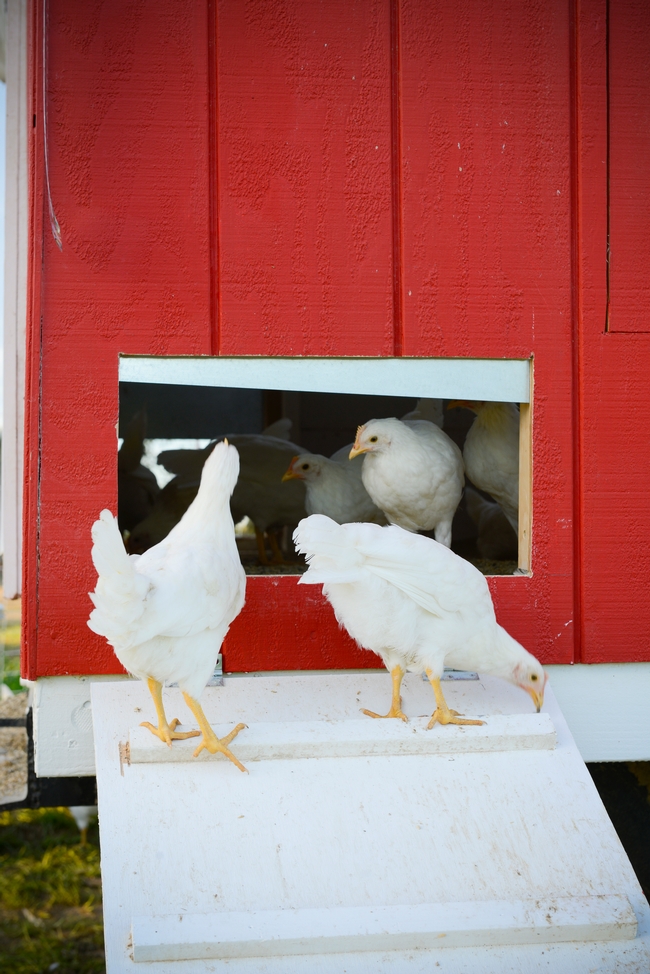
Posts Tagged: engineering
Save The Date! The 3rd Annual Merced County UAV/Ag Technology Field Day on July 15th
Mark your calendar! July 15, 2019 The 3rd Annual UAV/Ag Technology Field...

Robovator
A true engineer - 4-H'er Amanda Cantwell
Editor's note: Today is "Introduce a Girl to Engineering Day" and we'd like to highlight a...
How Do You Weigh a Bumble Bee? Ask UC Davis Entomologists and Engineers
A bumble bee news story released today by Andy Fell of UC Davis News and Media Relations is a great...

A bumble bee leaving an experimental colony housed in a cooler. The "bee scale" to weigh the insects has to be placed in this tunnel. (Photo by Kathy Keatley Garvey)

UC Davis pollination ecologist Neal Williams with a bee colony housed in a cooler. Williams and his team hope to understand the demographics of bumble bee colonies, including weighing individual bees as they enter or leave the hive. (Photo by Kathy Keatley Garvey)
Pastured poultry farm to foster innovation for small chicken farms

Pasture-based chicken production offers many benefits as well as some challenges in terms of food safety, animal health and welfare, and environmental impacts, said Maurice Pitesky, UC ANR Cooperative Extension poultry specialist with the School of Veterinary Medicine and co-leader of the poultry project.
The new 4.5-acre farm, located about one mile west of the central UC Davis campus, includes a seeded, irrigated pasture, where the chickens can forage. In the center is a bright red student-built Eggmobile for night time housing. The ‘coop on wheels' can be strategically moved around the land for consistent fertilization. The pasture uses a portable electronic fence to protect against predators and is surrounded by a 50-foot band of uncultivated land to serve as a wildlife buffer.
“This is a unique innovation, research and outreach resource for the Western United States,” Pitesky said. “The project includes faculty and students with expertise in veterinary medicine, husbandry, welfare, pasture management and engineering, which allows us to address issues related to predator control, welfare, food safety and food efficiency.”
Debbie Niemeier, professor in the Department of Civil and Environmental Engineering, and her team have already developed a number of innovations for the project, including a tarp-pulley system, portable-shade and predator-mitigation structures, an automatic watering system, and modular roll-out nest boxes.
One of the advantages of the pasture-based system is the opportunity for a farmer to integrate chicken production with a farm's existing cropping system, with the chickens providing natural fertilizer for the crops.
“It's also a way for crop farmers to move into poultry production without expanding their land or adding nitrogen fertilizer to their farming system,” Pitesky said.

Eggs produced by the project's flock will initially be donated to food shelters. The potential for eventual egg sales to the community is being explored. Eventually, the research team hopes to construct multiple Eggmobiles with different designs, and in time would like to expand the project to include broiler chickens, as well as cropping systems that integrate poultry, in order to fully maximize the potential of the land for food production.
A list of donors and other information about the UC Davis Pastured Poultry Farm can be found online. The School of Veterinary Medicine has established an online site where individuals interesting in supporting the UC Davis Pastured Poultry Farm financially can make donations.
Author: Patricia Bailey
Safety of GMOs debated online

Alison Van Eenennaam, UC ANR Cooperative Extension specialist in the Department of Animal Sciences at UC Davis, said research has shown that genetically engineered crops do not pose a risk to human health.
"There's a recent review paper where they summarized data from 1,700 different studies, and about half of those are publicly funded. And basically the results of those studies have been that there haven't been any unique risks or hazards associated with the use of this breeding method in the production of crops," she said.
The counter point was offered by Thierry Vrain, a soil biologist and genetic engineer with Agriculture Canada. He focused on the fact that more than 90 percent of the genetically engineered crops now in use were altered to be resistant to the herbicide glyphosate. He said this fact results in overuse of the herbicide.
"In terms of specific toxicity of the molecule glyphosate, which has very little acute toxicity - as it is advertised, it is safer than table salt. But in terms of chronic toxicity over time, over weeks and months, it will damage the microbiome and induce all kinds, all kinds of symptoms. In mice, and probably in humans," Vrain said.
Van Eenannaam tried to keep the discussion focused on the safety of GMOs.
"I think the most misunderstood thing is it's a breeding method that can be used to introduce all sorts of crop traits into crops and animals, and we always seem to get discussing the one particular application rather than looking at how it could be used to address many different problems that are associated with agriculture, including things like drought tolerance, disease resistance, biofortification of crops," she said.
Vrain agreed with most of Van Eenennaam's points.
"I agree with you, Alison, that GMOs are not necessarily toxic, et cetera, et cetera," he said. "There's all kinds of benefits, it's a very powerful technology. Used properly, it's probably very beneficial to humanity.
At the end of the debate Vrain reiterated his concern that the preponderance of GMOs are for glyphosate-resistant crops.
